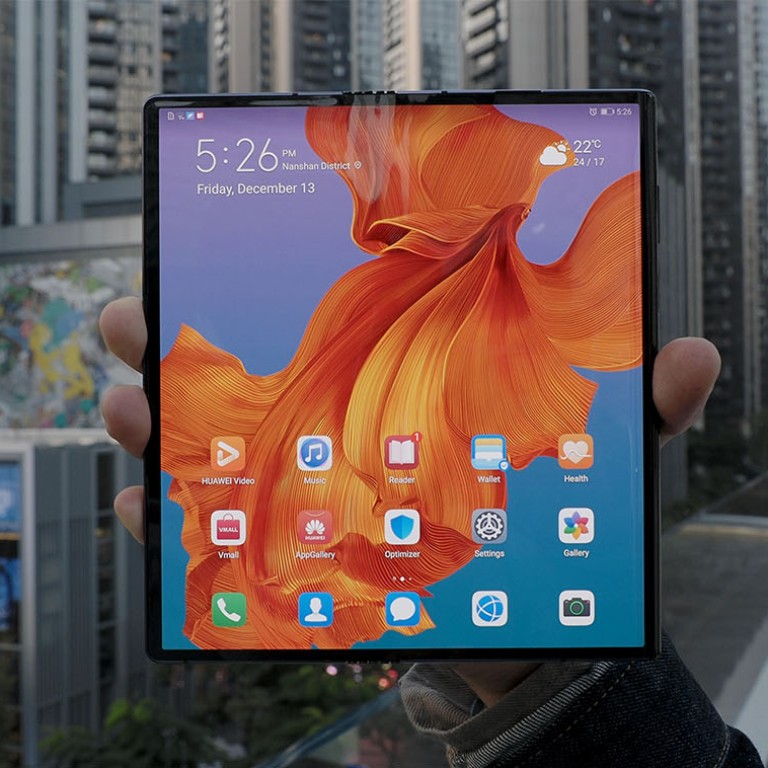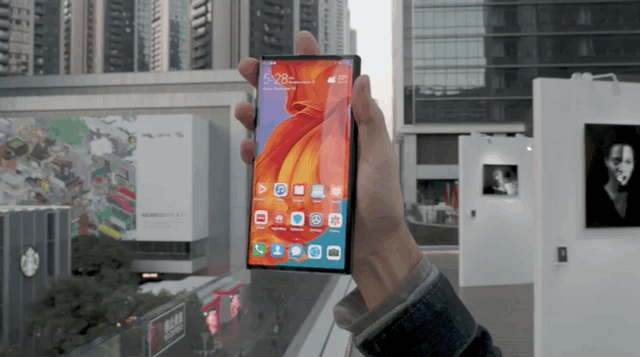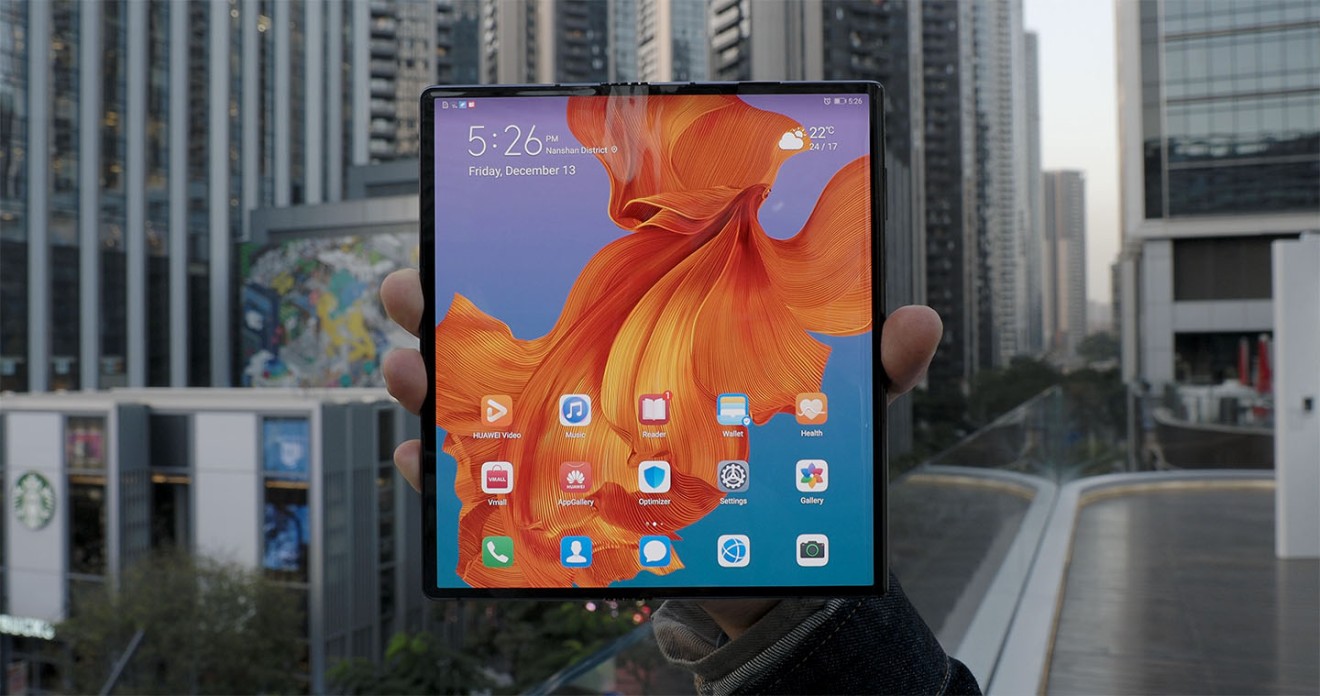
The Huawei Mate X is a foldable phone that looks better than it feels
The exposed flexible display is a major concern and it requires a surprising amount of force to fold compared with the Samsung Galaxy Fold
Unlike the Galaxy Fold, the folding screen of the Mate X is on the outside of the device. This means it looks like a relatively normal smartphone when it’s folded, putting it in stark contrast with the Galaxy Fold's small display on the front.
The downside of this design, though, is that the foldable screen is always exposed, potentially making it more prone to damage. The Galaxy Fold already faced controversy and delays because of how delicate these foldable screens are. So even though I only used the Mate X for a short period of time, I was really nervous about using it.

Folding and unfolding the Mate X also isn’t easy. To start to unfold it, you have to press a button on the back of the phone. This releases the back portion of the foldable display, which unfurls into an 8-inch tablet.

The folding hinge is a little stiff, so I didn't enjoy folding and unfolding the phone. When I did unfold it, I had to use a bit of force to bend the display. That makes me more nervous about breaking the phone at some point. The folding and unfolding action doesn’t feel smooth at all.

Since the button releases a clasp that keeps the phone folded up, it seems like this could also be a durability issue over long-term use. If you’re the type to fold and unfold this phone a lot (and that is the main feature of this phone), that means you’re constantly pressing the button and releasing the clasp. It was enough to make me concerned about whether the clasp will wear out over time, resulting in the screen no longer staying firmly against the back.

After using the Mate X for a while, I found that I preferred to use the phone while it was folded up. The 6.6-inch notchless screen on the front is good enough for everyday tasks. When I needed a bigger screen for Netflix and maybe some multitasking in split-screen mode, I would unfold it to get the 8-inch screen. Otherwise, I wouldn’t bother.
I know if I actually owned the phone, this would be a pretty lame way to use it. But this is the problem with a folding phone that isn’t actually enjoyable to unfold.

Comparing the Mate X with the Galaxy Fold, I prefer using the Galaxy Fold as an everyday phone. This is in spite of the fact that the Mate X looks better on the outside thanks to the larger display and slim bezels. The Galaxy Fold just has that paltry (by today’s standards) 4.6-inch front display, with beefy bezels around it.

But I’m more worried about the durability of the Mate X. The screen is always exposed, relies on a clasp to stay closed and takes a bit of force to fold and unfold. I can’t imagine what would have happened if I dropped the phone. I prefer to have a flexible screen that folds inward to help it avoid scratches.

But there’s one thing I really like about the Mate X: I could barely see the crease while it was unfolded. When looking at the screen from different angles, the crease is still visible, but it’s not as noticeable as on the Galaxy Fold. I also didn’t feel a bump in the middle of the screen while it was laying flat.
But this is a small comfort for what you’d be paying for this phone. The Mate X starts at a higher price than the Galaxy Fold at US$2,400 compared with US$1,980.
Those are high prices to pay for what still feels like experimental technology. But if you absolutely have to buy a foldable smartphone today, I think the Galaxy Fold feels nicer and safer for your money. The Mate X’s outward-folding design might be good for some people, but it’s not for me.
For more insights into China tech, sign up for our tech newsletters, subscribe to our award-winning Inside China Tech podcast, and download the comprehensive 2019 China Internet Report. Also roam China Tech City, an award-winning interactive digital map at our sister site Abacus.

